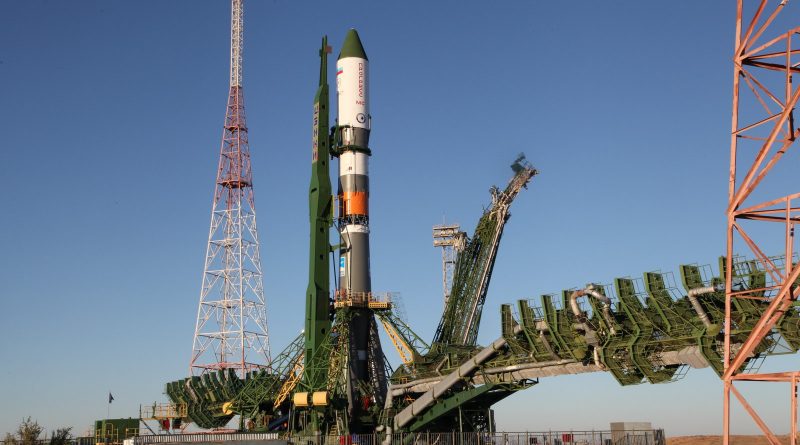Progress MS-07 Cargo Ship to Attempt Fastest ISS Rendezvous on Thursday
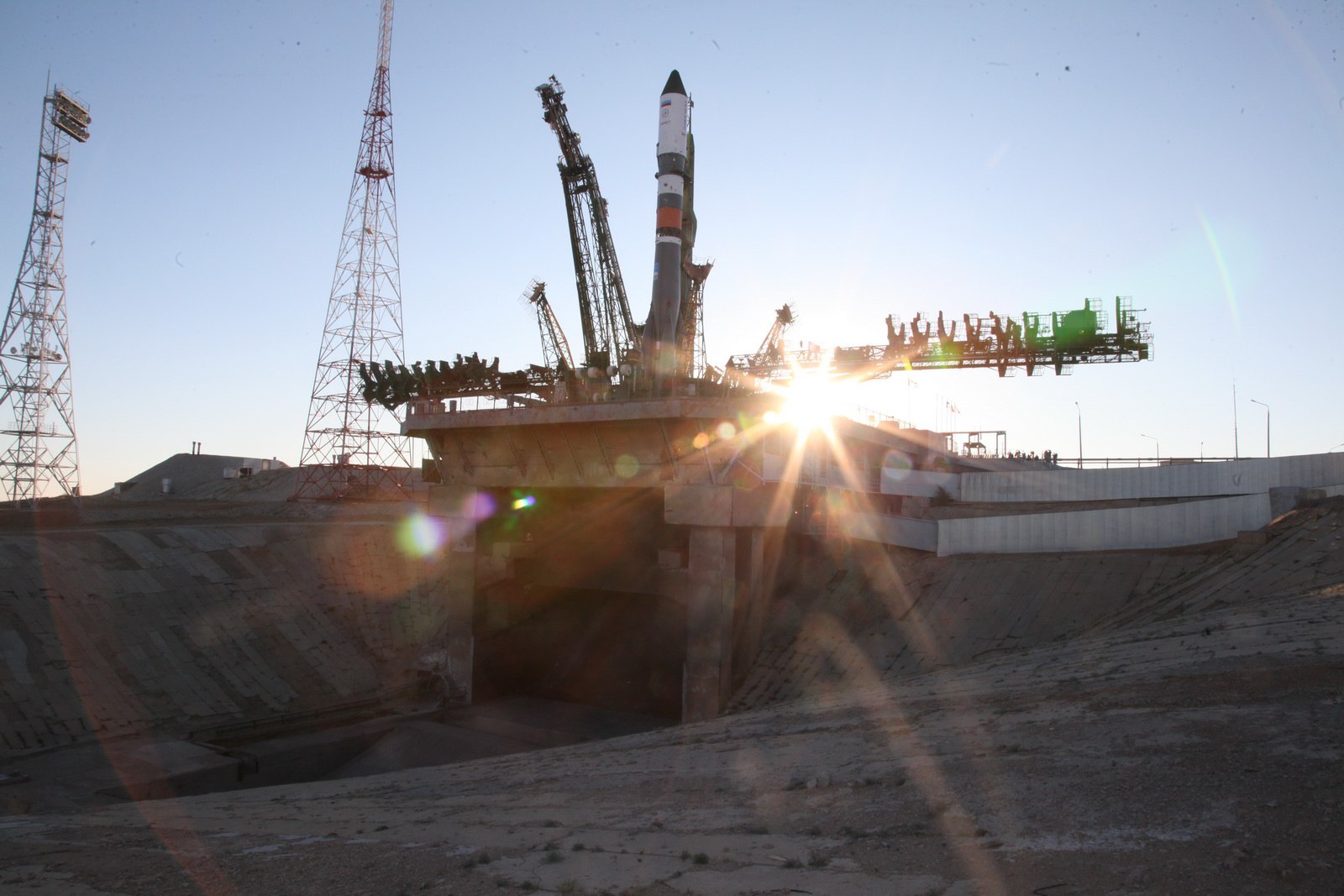
A Soyuz 2-1A rocket rolled out to its launch pad at the Baikonur Cosmodrome at sunrise on Tuesday, greeted by colorful skies as the stage is set for liftoff on Thursday to send the Progress MS-07 cargo ship on an ultra-fast rendezvous with the International Space Station. Progress MS-07 is the first spacecraft aiming to link up with the Space Station after just two orbits around the Earth, traveling only three and a half hours from the Kazakh launch site to its orbital destination.
Preparations are proceeding on track for liftoff at 9:32:03 UTC on Thursday at which point the International Space Station will be 165 Kilometers south-west of the Baikonur launch pad, set to “overtake” the ascending Soyuz rocket half a minute into its climb to orbit so that Progress can be injected into a position behind & some 200 Kilometers below the Station.
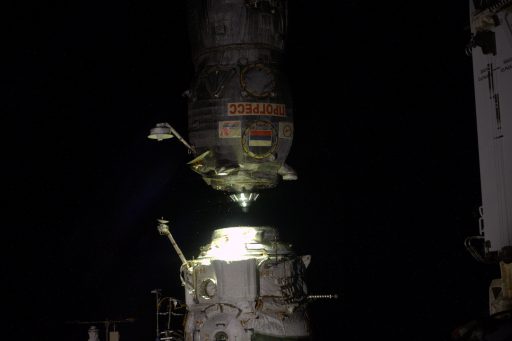
From there, the spacecraft will execute a novel approach to ISS that encompasses a combined plane-change & orbit-raising effort on the craft’s first lap around Earth that lines it up for an automated rendezvous guided by the KURS Navigation System, ideally inbound for a fully automated lap around the Space Station and a straight-in approach on auto pilot for docking to the Pirs module three hours and 24 minutes after launch.
Should anything be amiss during the new rendezvous procedure, Mission Controllers in Moscow have the option of backing out and setting up a two-day rendezvous per the tried-and-true procedure that has been in use for decades.
Implementing a two-orbit flight profile allows around two and a half hours to be cut from the currently-used four-orbit profile that was inaugurated in 2012 for the uncrewed Progress spacecraft for a series of tests before becoming the preferred method for crewed Soyuz flights to ISS in 2013. The fast-track rendezvous was born out of a desire to reduce the two-day ride on the cramped Soyuz to only a few hours spent within the confines of the spacecraft before crews could enjoy the comforts of ISS.
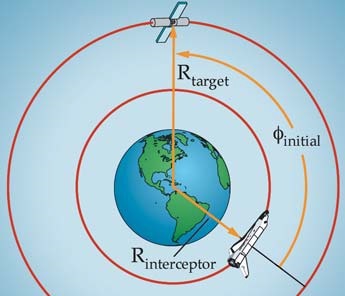
However, the faster the rendezvous gets, the tighter the constraints will be in the orbital geometry between the chasing spacecraft and the International Space Station. Constraining an orbital rendezvous is the requirement to launch the chaser into the orbital plane of the target spacecraft with the target typically orbiting ahead of the chaser at the point of orbital insertion. The distance between the two at orbital insertion is typically expressed as an angular value known as the phase angle.
When time is not of the essence, the phase angle can be quite large as the chaser, injected into a lower orbit with shorter period than the target, has a number of options to raise its orbit and catch up with the target over a period of days. If a rendezvous in a matter of hours is desired, orbital geometry between the chaser and target has to be such that the target is within a very narrow phase angle window when the Earth’s rotation carries its orbital plane over the launch site.
In case of Soyuz and ISS, the allowable phase angle can be as large as 150 degrees for a two-day approach, but for the four-orbit flight profile, the allowable phase angle can be no more than 35 degrees. This requires a multi-week setup via small orbit-raising maneuvers that modify the Station’s orbital period in order to place it at the correct position in its orbit when the planar launch time arrives.
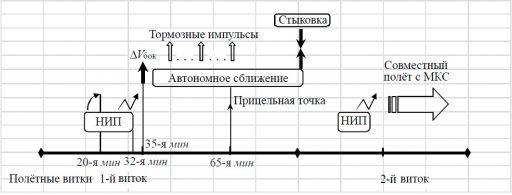
For a two-orbit rendezvous, the allowable phase angle range would shrink further and require even more elaborate setup of the orbital geometry. However, Russian trajectory teams came up with a trade-off between planar and phase angle constraints in what is known as a Quasi Coplanar Insertion. This broadens the planar launch window by up to several minutes to create some leeway in the setup of the phase angle and so allow the chaser to launch at the optimized phase angle but slightly out-of-plane.
The planar mismatch has to be made up through maneuvering by the chaser, coming at the cost of additional propellants, though a second trick will keep the additional fuel expense to a minimum. This is realized by launching the chaser into a slightly different orbital inclination than ISS to set up the most efficient inter-orbit angle and so bring the chaser to its destination within the normal fuel margins of the traditional rendezvous procedure.
The intricacies of orbital rendezvous on the expressway are explained in our recent article outlining the nuts and bolts of Russia’s planned two-orbit rendezvous profile and can be found here.
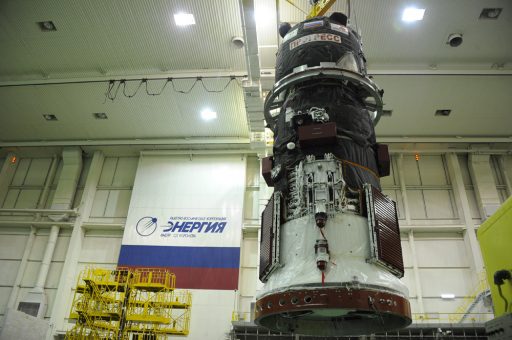
When the two-orbit rendezvous will be implemented on crewed Soyuz missions will largely depend on the success of Progress MS-07. Russia finds itself in the advantageous position of having two very similar spacecraft in use for cargo and crew missions, allowing the unmanned Progress ships to act as a pathfinder whenever new technology or new flight techniques, like the two-orbit rendezvous, are introduced.
The primary purpose of the Progress MS-07 mission is to keep up a steady chain of supplies to the International Space Station that stepped down to only two permanent crew members on the Russian Segment earlier this year. This was implemented due to low workload on the Russian side and to cut costs by reducing the number of annual Progress missions to three. MS-07 is the third and last Progress headed to ISS this year, booked for a half-year docked stay through April 2018.
>>Progress MS Spacecraft Overview
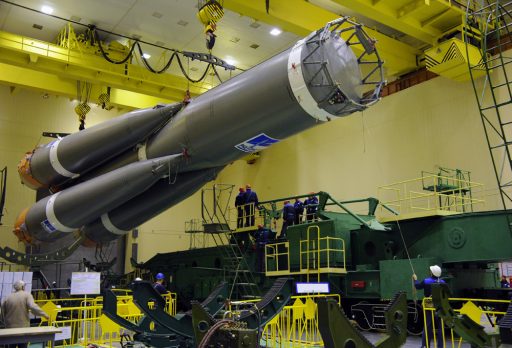
Progress MS-07 is loaded with the typical cargo mix including refueling propellant for transfer to ISS, water for crew consumption and oxygen generation, pressurized gas to top up the Station’s atmosphere, and over 1.2 metric tons of dry cargo including food, crew supplies and science gear.
Taking its vertical position atop the launch pad at Site 31/6, Soyuz 2-1A is gearing up for an eight-hour countdown operation beginning at sunrise on Thursday. Initial countdown activities include a final set of checkouts on the launch vehicle and spacecraft, the installation of batteries on the Soyuz booster and preparations for the tanking procedure. The Russian State Commission will meet at T-5 hours in order to provide the green light for propellant loading, looking at the status of countdown operations and the results of launch vehicle testing performed over the last two days.
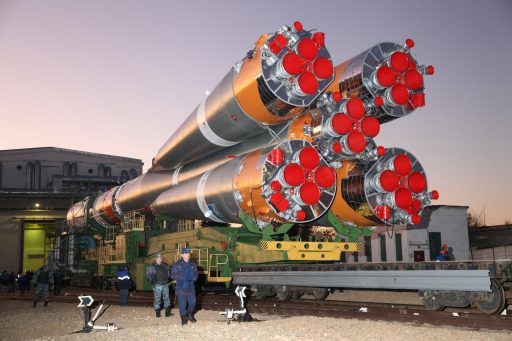
Tanking will pick up at T-4 hours to pump around 274 metric tons of rocket-grade Kerosene and -183°C Liquid Oxygen into the 12 tanks on the boosters, core stage and Block I upper stage. While propellants are flowing into the vehicle, engineers will also fill the core stage and four strap-on boosters with Hydrogen Peroxide, in use to drive the engine turbopumps during flight. The boosters and core also receive Liquid Nitrogen, to be heated up during flight to act as pressurant gas for the propellant tanks.
Propellant loading will wrap up inside two hours to launch, to be followed by final close out activities at the launch pad and the reconfiguration of the rocket’s digital guidance system. Soyuz 2-1A will be revealed atop its launch pad in the last hour of the countdown and all personnel will depart the complex for the fast-paced automated countdown sequence, starting at the T-6-minute mark with the insertion of the launch key to signal final approval for liftoff.
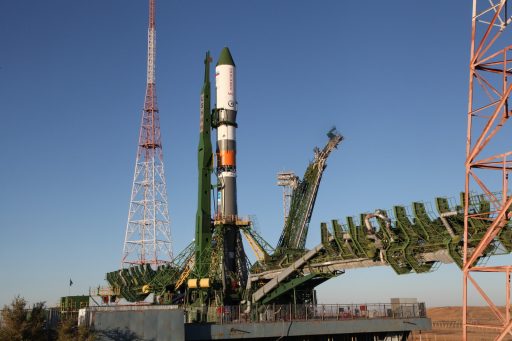
Standing fully-fueled for launch, Soyuz will purge its engines to ensure a clean ignition, pressurize its tanks and transition to onboard power. At T-1 minute, the vehicle will be handed control of the countdown, leading up to the Launch Command at T-20 seconds that triggers the ignition of the RD-107A and RD-108A engines on the core stage and boosters – initially spinning up the turbopumps and going through a preliminary thrust stage before throttling to a combined launch thrust of 422 metric-ton force to overcome counterweights and lift the 46-meter tall vehicle off the ground.
Liftoff is set for precisely 9:32:03 UTC to enable Progress to be injected in a precise position behind and below the International Space Station in order to catch up after just two laps around the planet. While Soyuz will be transitioning from a vertical climb onto a north-easterly departure path, the Space Station will pass close to 400 Kilometers overhead, overtaking the rising launch vehicle.
Racing away from the Baikonur Cosmodrome toward the Russian-Kazakh border, Soyuz will push through the sound barrier and encounter Maximum Dynamic Pressure just over a minute after taking off.
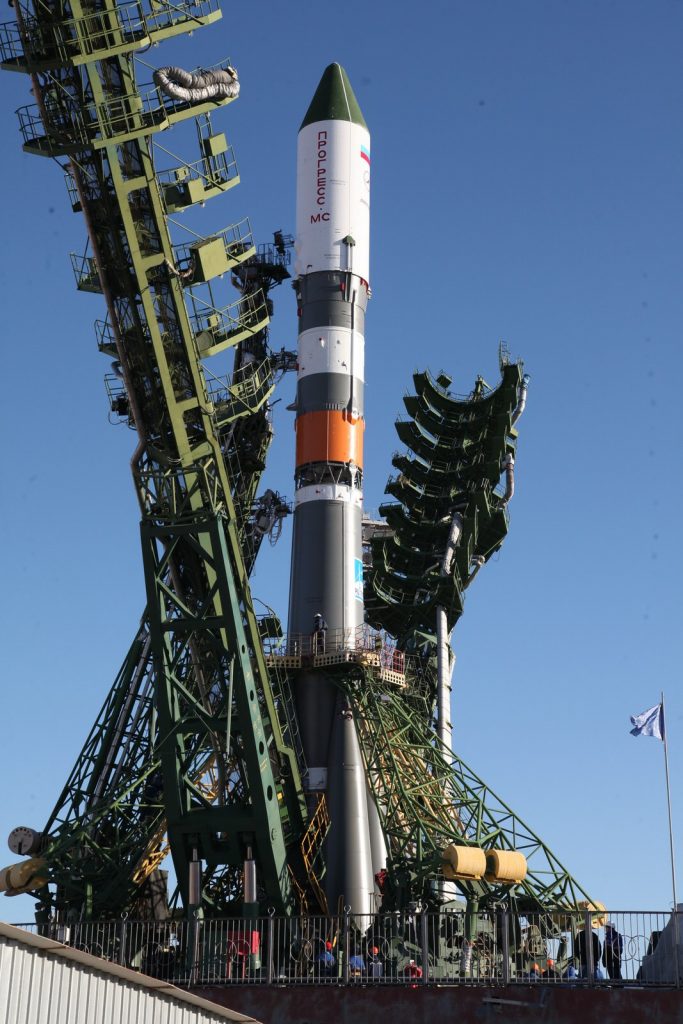
The four boosters will burn for 1 minute and 57.5 seconds, each consuming 39 metric tons of propellant to help accelerate the Soyuz to over 1.5 Kilometers per second. Separation of the 19.6-meter long boosters will be accomplished through pyrotechnics and pistons, sending them tumbling away from the still-firing core stage toward a crash landing some 355 Kilometers from the launch site.
With the boosters gone, Soyuz will rely on its RD-108A engine alone, generating 102 metric ton-force of thrust when flying through the rarefied upper atmosphere. During operation of the core stage, Soyuz will jettison the protective launch shroud to reveal the Progress MS-07 spacecraft for the rest of its ride into orbit.
The core stage will burn until four minutes and 46 seconds into the flight, separating from the upper stage in hot-staging mode with the RD-0110 engine firing up just as the pyrotechnic separation system is initiated to send the 27.8-meter core toward re-entry and impact 1,570km from the launch site.
Ten seconds after ignition of the Block I third stage, the aft section covers of the Block I are released to fully expose the engine section with its four main nozzles and four gimbaled verniers for attitude control.
Generating 30-metric-ton-force of thrust, the third stage will consume nearly 25 metric tons of propellants over a burn of three minutes and 58 seconds to push the 7,400-Kilogram spacecraft into orbit. Separation of the Progress MS-07 spacecraft is expected eight minutes and 48 seconds after liftoff, marking the end of the mission for the Soyuz rocket and the beginning of an express rendezvous for the Progress cargo vehicle.
Immediately after arriving in orbit, the Progress will deploy its two power-generating solar arrays and KURS navigation antennas – events closely watched by Mission Control Moscow as any anomaly in these early steps would prompt a switch to the longer rendezvous scheme. An initial test of the flight control and KURS navigation system will be performed while Progress is still in range of Russian ground stations for 12 minutes following orbital insertion.
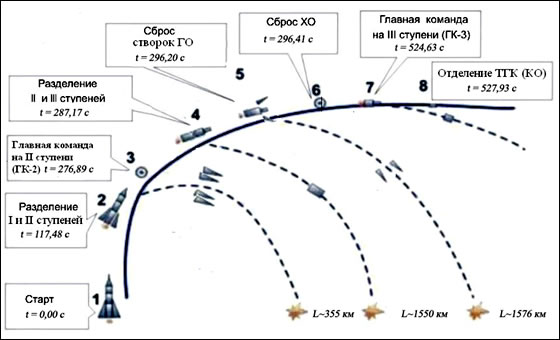
Heading off on its first lap around Earth, Progress MS-07 will have pressurized its Unified Propulsion System and entered three-axis stabilization, holding a pre-programmed orientation for its first orbital maneuver. The KTDU main propulsion system is expected to make its first firing 41 minutes after launch, starting the process of lining up the orbital plane of Progress with that of ISS and maneuvering the spacecraft closer to the Station’s orbital altitude.
The Automated Rendezvous Sequence will be commanded to start 62 minutes into the mission, taking the usual 100 minutes from Rendezvous Initiation to the arrival of the spacecraft at the Ballistic Targeting Point. Both the four-orbit and two-orbit rendezvous, retain the overall architecture of the Automated Rendezvous Sequence from the traditional two-day flight scheme as Russian ballisticians did not want to tamper with a very well-proven technique.
Twenty minutes after rendezvous initiation, Progress will execute a large ground-targeted burn to continue climbing toward ISS and in the process slow the speed at which it closes the phase angle between the two craft. This will be followed by a small correction maneuver one hour and 46 minutes into the flight to adjust for injection inaccuracies by the Soyuz launch vehicle ahead of starting the relative navigation phase of the rendezvous when activating the KURS system on Progress and Station.
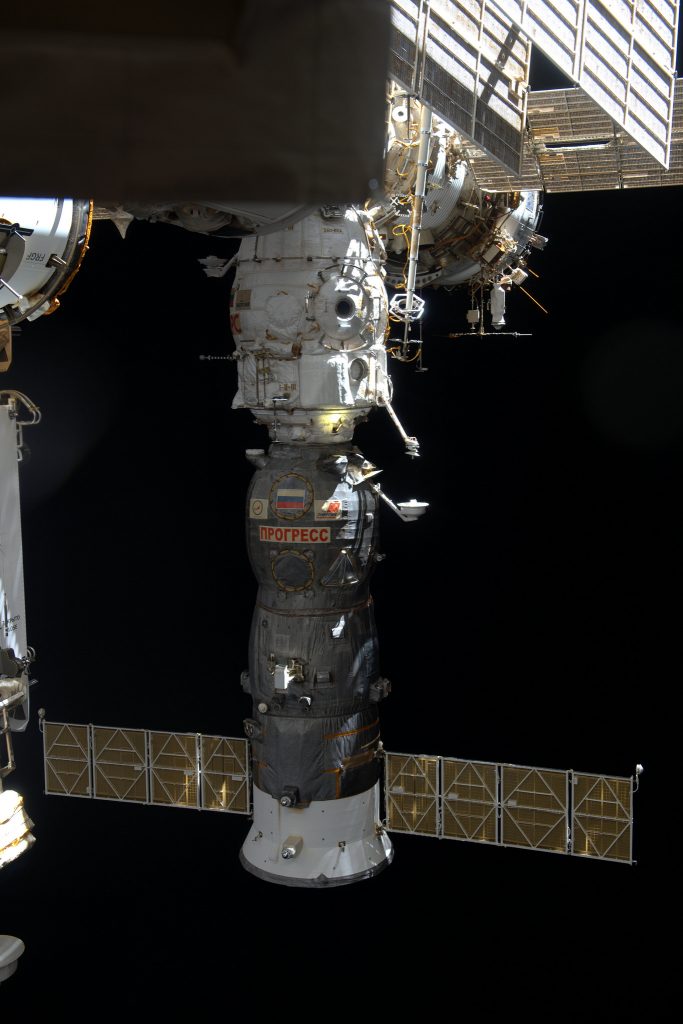
Through KURS, Progress will initially keep track of its angular geometry with ISS before establishing a firm signal lock to obtain range, range rate and additional angular parameters for the calculation of subsequent rendezvous maneuvers. A major rendezvous impulse is expected two hours and six minutes into the mission to guide Progress onto a flight path toward the targeting point, located one Kilometer from the Station to preserve the option of a passive rendezvous abort should anything go wrong over the next hour of the approach.
The KURS system will be validated at distances of 80 and 15 Kilometers and the Russian ISS crew members, Sergey Ryazanskiy and Aleksandr Misurkin, will test out the TORU system by controlling the Progress remotely for a brief moment to ensure they could manually dock the vehicle in case of anomalies inside the last 400 meters of the rendezvous. A series of three rendezvous impulse maneuvers, the first two using the 300-Kilogram-force main engine, will occur around the Ballistic Targeting Point to reduce the intentional targeting offset and transition the Progress onto a path to ISS.
The flyaround will commence when Progress reaches the 400-meter mark to ISS, expected right at the T+3-hour mark. Through a slow lap around the Station, Progress will line up with the Pirs module on the Earth-facing side of the Station for a brief period of Stationkeeping before the Progress is commanded into a straight-in approach to cover the last 180 meters to docking.
Docking is expected at 12:56:35 UTC (+/-3min) to mark a new record for the fastest docking with the International Space Station. Progress will retract its docking probe shortly thereafter and hooks will close to form a rigid interface between the two spacecraft to enable hatches to be opened later on Thursday for an express supplies delivery.

